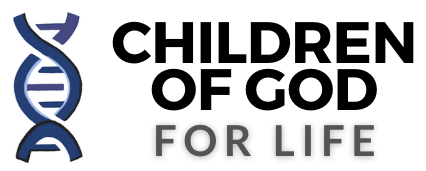A growing number of research programs use the remains of aborted children to study human development, genetics, and disease. At Children of God for Life, we are including a focus beyond pharmaceuticals to the root cause in the scientific community. Until the commoditization of aborted children in scientific research ends, there will never be ethically irreproachable pharmaceuticals.
Scalps and back skin grafted onto rodents:
In September of 2020, researchers at University of Pittsburgh in the Department of Infectious Diseases and Microbiology and the Department of Microbiology and Molecular Genetics published their work on the development of humanized mice and rats with “full-thickness human skin.” Human skin protects an individual from infection. There is no way to study the effects of pathogens on individuals without subjecting them to disease. So, the researchers used aborted children.
Full-thickness human skin from aborted children was grafted onto rodents. Simultaneously the scientists co-engrafted the same child’s lymphoid tissues and hematopoietic stem cells from the liver. Rodent models were humanized autologously by grafting skin and organs from the same child onto the same rodent. These “human Skin and Immune System (hSIS)-humanized” mouse and rat models aid the study of infection-induced immunopathogenesis through skin infection.
To make the hSIS-humanized rodent models, the report in Nature journal said that the researchers used full-thickness fetal skin from humans aborted at the gestational age of 18 to 20 weeks of pregnancy at the Magee-Women’s Hospital at the University of Pittsburgh Medical Center and the University of Pittsburgh Health Sciences Tissue Bank. The mothers provided written consent to donate their children to research.
A vendor provided mice and rats genetically altered and rendered severely immunodeficient. Scientists tranplanted the thymus, liver, spleen, from the children into the rodents. Then they grafted full-thickness skin from the same aborted children’s scalps or backs onto the rodents, and allowed the rodents to grow. Scientists then exposed the humanized rodents to community-associated methicillin-resistant Staphylococcus aureus (CA-MRSA) bacteria and infected the skin to study how the internal organs responded to the staph infection.
Scientists took human skin from the scalp and the back (dorsum) of the fetuses so that grafts with and without hair could be compared in the rodent model. They removed excess fat tissues attached to the subcutaneous layer of the fetal skin. Then they grafted the fetal skin over the rib cage of the mouse. By two weeks the wounds were healing, with the grafts lasting up to ten weeks post-transplantation. Multiple layers of human keratinocytes, and fibroblasts formed in the grafts, and the human skin grew blood vessel and immune cells.
Human hair was evident by 12 weeks but only in the grafts taken from the fetal scalps. Figure 1 of the scientific report shows photographs of the humanized rodents at 0, 2, 4, 10, and 12 weeks post-transplantation. In the scalp grafts, fine human hair grows long and dark surrounded by the short white hairs of the mouse. The images literally show a patch of baby hair growing on a mouse’s back.
The National Institute of Health (NIH) and the National Institutes of Health (NIH)-National Institute of Allergy and Infectious Diseases (NIAID) funded and supported this work.
Reference:
Y. Agarwal et al., “Development of humanized mouse and rat models with full-thickness human skin and autologous immune cells,” Scientific Reports Vol. 10, 14598 (September 3, 2020), doi: 10.1038/s41598-020-71548-z.
7-September-Development-of-humanized-mouse-and-rat-models-with-full-thickness-human-skin-and-autologous-immune-cellsWe got the word out:
- HORROR: Hair from the scalps of aborted children grows on the backs of ‘humanized’ mice (Anne Marie Williams, RN, BSN, Live Action)
- Scientists Use Scalps From Aborted Babies to Create “Humanized Mice” for Research (Micaiah Bilger, Life News)
- US university grafts scalps from aborted babies onto ‘humanized’ mice (Doug Mainwaring, Life SiteNews)
- Aborted baby scalps grafted onto rats at US university, baby hair growth observed (Gript News)
- Protest Against the Grafting of Aborted Baby Parts Onto Mice at the University of Pittsburgh (TFP Student Action)
- On the 48th anniversary of Roe v. Wade, questions remain in Planned Parenthood controversies (Sam Dorman, Fox News)


Dear GOD! Have mercy on this. Makes me want to vomit.
Want information to be in English
Science and medicine proclaim to want to save lives with sick innovation and research like we just read about but are so deceivingly duplicitous to insist on woman having access to kill their unborn children in or out of the womb. Their effort to relieve a mother’s remorse for having an abortion is by conning them into thinking the act of abortion can produce something worthwhile for society. Do you really think the evil “genius” outcomes are for your longevity? No, it’s for those who are so afraid of the consequences due them for their heinous acts throughout life.